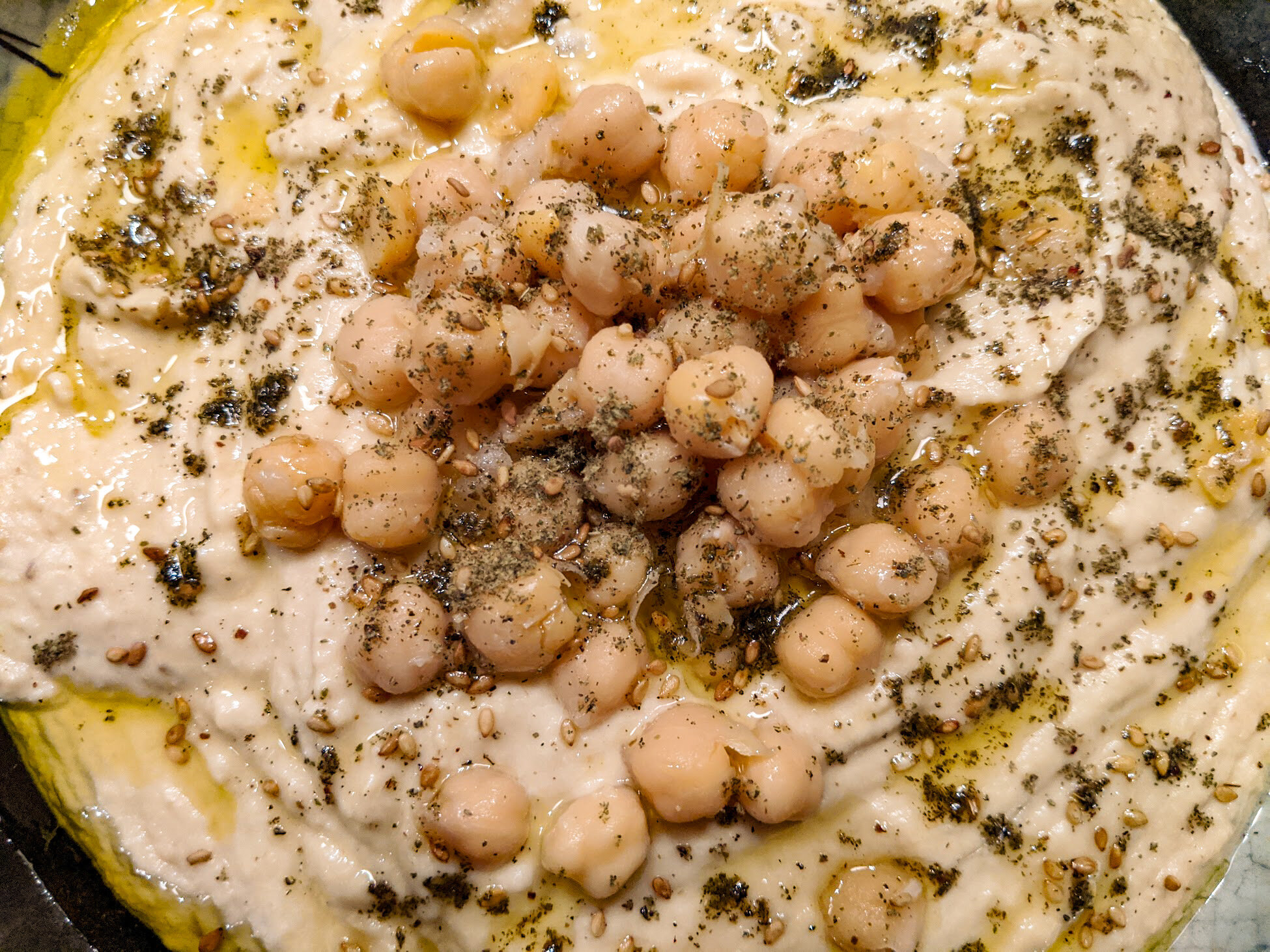Hummus
I love the texture and the taste of chickpeas. Chickpeas (also called garbanzo beans) are a famous legume as they taste great and as an extra bonus they are a powerhouse of nutrients, packed with plant-based protein, dietary fiber, and carbohydrates. They are a rich source of antioxidants and minerals such as iron, zinc, magnesium, folate, and phosphorus. The nutty seeds also have a number of essential vitamins like thiamin, riboflavin, niacin, vitamin C, A, B6, B12, and vitamin K.
One of my favorite ways to eat Chickpeas is as hummus which I love eating. If I had to pick one way of eating it would be on a bed of rice (cooked with medicinal mushrooms of course) with a simple Israeli salad. It’s also an amazing dish as a side with spiced mincemeat or as a dip with pita bread.
After years of eating hummus in tiny, hole-in-the wall cafes in Jaffa or the old city of Jerusalem, I first learned to make own hummus from Michael Solomon of Zahav restaurant fame. He’d visited some of the best hummus makers to come up with his recipe and I have continued to adapt it as I discover new ingredients to increase the nutritional and medicinal value.
While I have provided specific amounts for the ingredients, I strongly suggest that you also experiment with them to find the perfect combination that works for you.
Ingredients
1/2 pound dried chickpeas
Water for soaking and cooking
7 large unpeeled garlic cloves
1/2 cup extra-virgin olive oil (use your good stuff here)
2 tablespoons of whole cumin seed. I like adding the whole seed but 1 tbsp of ground cumin is also a perfectly great option
1/2 cup tahini, at room temperature
5 slices of astragalus (optional but is a great immunity booster)
1 teaspoon of mushroom powder (optional but adds a powerful punch of nutrition)
Juice of 1 to 2 lemons depending on taste
Salt
Zatar, for garnish (Zatar is an amazing mix of Mid-eastern spices and includes Zatar leaves, Sesame and Sumac. You can usually find it in Mid-eastern stores and it is so worth it!)
Instructions
In a medium bowl, cover the dried chickpeas with 2 inches of water and soda. Leave the chickpeas covered at room temperature overnight.
Drain the chickpeas and rinse them under cold water, 2 or 3 times and add them top a saucepan.
Add enough fresh water to the pan so that the chickpeas are covered with around 2 inches of water. Add the astragalus and mushroom powder, the garlic cloves and bring to a boil.
Once it has boiled, skim off the bubbly white residue. This residue is toxins escaping from the chickpeas.
Lower the fire to a simmer and cook with the pan covered over moderately low heat until the chickpeas are tender, usually for about 1 to 2 hrs. It is important you simmer and not boil vigorously. Boiling causes the skin of the chickpeas to separate.
Drain, reserving 1 cup of the cooking water and 2 tablespoons of the chickpeas. Remove the astragalus slices.
Peel the garlic cloves.
In a food processor, mix the chickpeas with 1/2 cup of the reserved cooking water, 1/4 cup of the olive oil and 6 garlic cloves, and puree for a minute or two.
Add the cumin along with 1/4 cup each of the tahini and lemon juice, and process until creamy. If the consistency is too thick add some more of the reserved cooking water,
Season the hummus with salt and transfer to a serving bowl.
Add the remaining chickpeas and the last garlic clove. Drizzle with olive oil and add Zatar for extra flavor.
Notes
The astragalus and medicinal mushroom are both great for building deep immunity and add an extra depth to the chummus.
